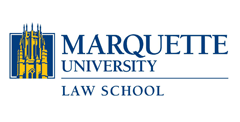Abstract
Achieving the appropriate balance between the right of first authors to control the later use of their work and freedom for follow-on authors to further develop from that text has long been challenging. Currently, under United States law in particular, fair use stands as a nebulous to buffer between the two creative camps, granting a significantly limited right to the second author to work from the first authors’ text. While that tension excites its own debate, a less considered aspect of this tension involves the degree to which the first author might be creatively and productively affected by the follow-on author, particularly in a context where absolutely no such mediating protection exists. If that lack of protection substantially improves and increases the original author’s output, by extension it puts the foundational reasoning for U.S. copyright’s limited monopoly in question.
Don Miguel de Cervantes wrote Don Quixote in such a copyright-less landscapre. Cervantes’ bitter interplay with a follow-on author, Alonso Fernándex de Avellaneda—which substantially affected both the plot and general content of Cervantes’ original Don Quixote—provides a striking insight into what such an uncontrolled universe might produce creatively.
Our focus here will first be to consider the interplay of these two authors through a close reading of their rival texts. Having provided the introduction to our topic in Part I, in Part II we will take a broader look more generally at the historical relationship of the author to his text. In Part III we will focus on Cervantes specifically, addressing his misattributions and non-attributions, which highlight the lack of authorial control for artists in his time. In Part IV we will consider Cervantes’ follow-on author, Avellaneda, and his work, often termed the “false Don Quixote.” We will conclude by considering what this bitter rivalry may suggest in terms of creative production, the core goal of the U.S. Copyright Clause.
Repository Citation
H. Parkman Biggs,
Joutsing at Windmills: Cervantes and the Quixotic Fight for Authorial Control,
22 Marq. Intellectual Property L. Rev. 213
(2018).
Available at: https://scholarship.law.marquette.edu/iplr/vol22/iss2/5
Included in
Comparative and Foreign Law Commons, Entertainment, Arts, and Sports Law Commons, Intellectual Property Law Commons, Law and Society Commons, Legal History Commons
